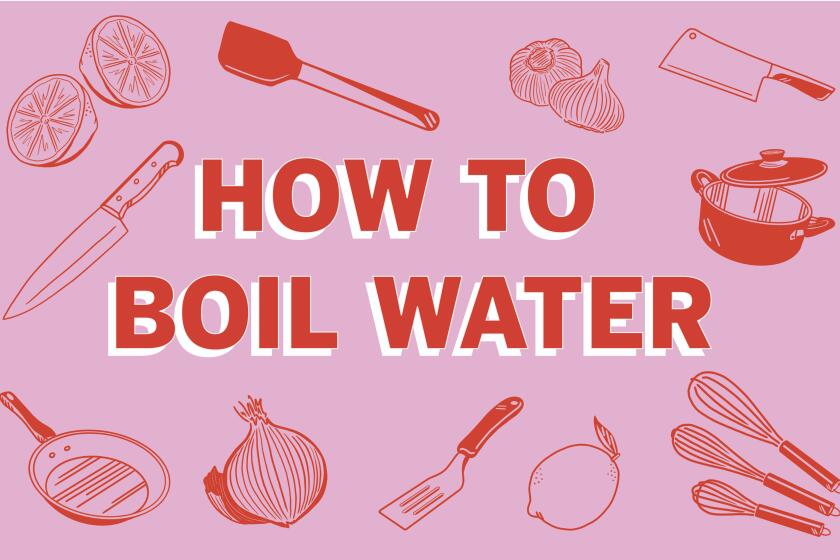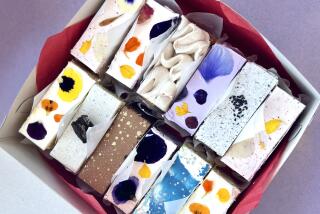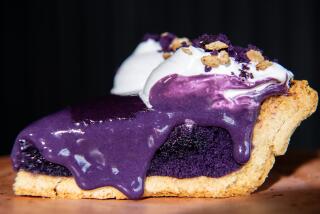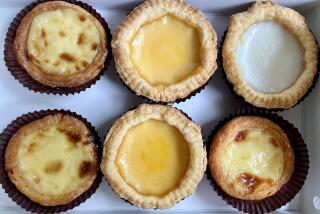A salted caramel-chocolate tart too easy to mess up

- Share via
With so many of you having to stay home and cook for the first time — ever or more than you have in a long time — we get that it can be overwhelming to have to cook all your meals from scratch. So, we’re here to get you started.
Each day we’re going to post a new skill here and go in detail about how to do it — a resource for cooking basics so you can get food on the table and get through this.
A series of simple tutorials for making some basic recipes at home.
Lesson 41: Salted Caramel-Chocolate Tart
A classic salted caramel-chocolate tart seems like a pastry triumph but it is actually pretty easy when you know what you’re doing.
The recipe everyone uses is from Claudia Fleming, a former pastry chef at Gramercy Tavern in New York City and author of the recently reissued pastry book classic “The Last Course,” is perfect, so there’s no need to mess with it. But for the beginner baker with lots of ambition but no special equipment, I’ve made some tweaks to make it even simpler to execute.
As a professional cook, I own dozens of tart pans of varying sizes and shapes, some with straight edges and some with scalloped or fluted edges. But the average American home cook doesn’t, so let’s use what we’ve got — a 9-inch round springform or regular cake pan.
Into it would typically go flaky pastry dough tinted mahogany with cocoa powder. But pastry dough can be intimidating for even seasoned cooks on a good day, so let’s use the easier version: hot water pastry.
You’ve probably seen it on “The Great British Baking Show” (known in the U.K. as “The Great British Bake Off”); there, it’s used for encasing tall meat pies. It goes against every instruction you’ve read for making pastry dough: Boiling hot water and fat are poured into flour and then kneaded into a smooth dough. The finished texture is crisp but sandy like a good shortbread cookie. It holds its shape in the oven better than traditional cold-water pastry, which is prone to shrinking when overworked. Plus, there’s no rolling it flat or having to worry about whether the pastry will stick to the work surface — you press it into shape in the pan like a cookie-crust for cream pies.
Also you can blind bake it — pastry-speak for cooking the crust ahead of filling it — without any weights.
You’ll notice the filling calls for corn syrup. Some cooks scoff at corn syrup, but it’s added insurance against the sugar crystallizing in the pan when heated and it adds a pleasant soft chew to the final texture of the filling. If you don’t have corn syrup, you can substitute pancake syrup — the kind of maple syrup “flavor” it adds is kind of great. I also add one tiny teaspoon of cornstarch (an optional step) to the caramel, and it helps keep the caramel from oozing everywhere when I cut into the pie.
After that, the top is glazed with a simple chocolate ganache, made with hot cream poured over broken chocolate and left to stand until melted before being gently stirred together. You pour it over the set caramel, sprinkle over a generous pinch of flaky sea salt and you’re done. You do have to let the ganache sit for a couple hours so everything can set up well enough to slice, but that’s the most difficult part of the whole endeavor.













